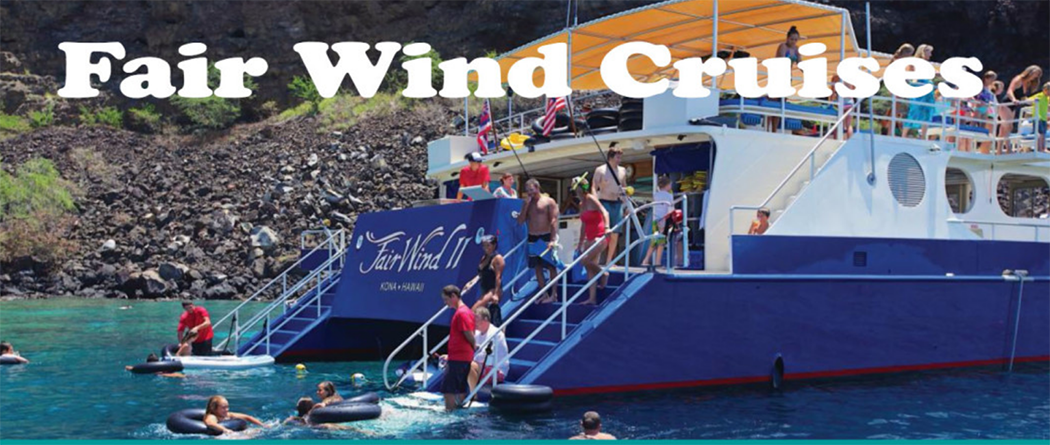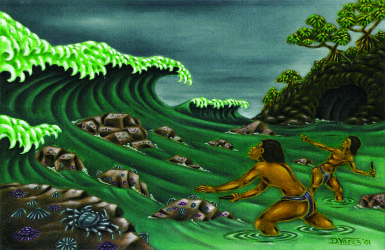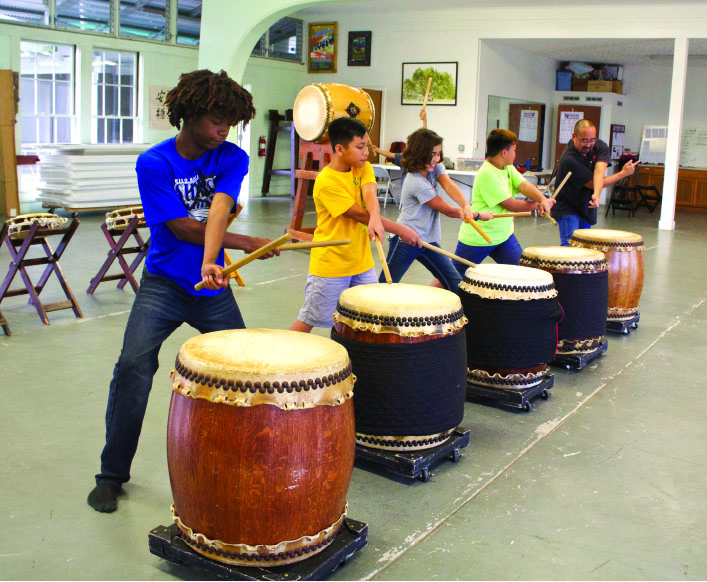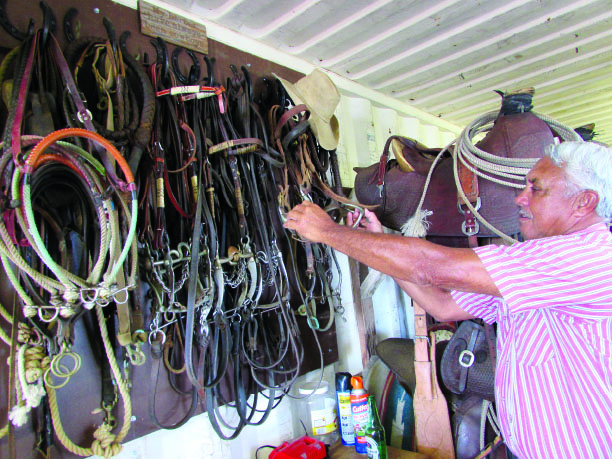
Kahua Ranch ‘Ohana Reunion
By Ma‘ata Tukuafu
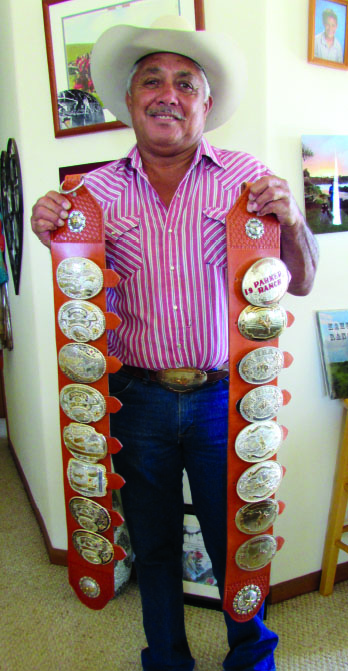
With humble pride in his voice, Godfrey Kainoa Sr. speaks about three gold and black plaques lined up in his living room. The inscribed awards are from the O‘ahu Cattlemen’s Association for three generations of hardworking Hawaiian paniolo (cowboys): his grandfather Peter Kainoa Sr. inducted in 2013, his father John Kainoa in 2003 and his own, Godfrey Kainoa Sr. in 2015.
“All three of us were inducted to the Paniolo Hall of Fame,” Godfrey says. “I was the hard-headed one to take after my dad. He never wanted any of his kids to be a cowboy, but [on his deathbed] he said, ‘If you are going to be a cowboy, you be the best.’”
A true paniolo, Godfrey has been a cowboy for most of his life. His wife Amoo Kainoa jokes that he’d ride anything with hair. Pointing to his torso, Godfrey says he’s broken almost every bone in his body from working as a paniolo on the ranch to participating in hundreds of rodeos. But he repeats with a grin that he’d do it all over again.
Born in 1955, Godfrey is the youngest of ten children and the only child who was not born on Kahua Ranch. After living on the Ranch where Godfrey’s nine siblings were raised, his father “Johnny” Kainoa obtained acreage from Hawaiian Home Lands. The family moved to Waimea where Godfrey was raised, though his father contined to work at Kahua.
When Godfrey was only three years old, his father became his babysitter. For an entire year, Godfrey was put on a horse, and followed his father around the ranch. He says that really, the horse was his babysitter. At four years of age, one of the families living at the ranch started caring for him, but the experience of being so close to his horse taught him to love animals, livestock, and the land.
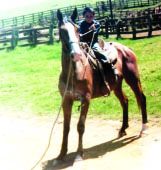
At the age of eight, Godfrey was riding in horse races in Hilo and herding cattle with his father. “My father would put me on a difficult horse, but he knew I could handle and control him. Pretty much though, I was more afraid of my dad than any horse!” laughs Godfrey.
Godfrey graduated from Honoka‘a High School and entered the service for about six months. Then his father got sick and he moved home to take care of the family ranch. His father died shortly after he moved back, and Godfrey credits “Papa” Monty Richards and Kahua Ranch with taking care of all expenses and caring for the wellbeing of his mother.
“Papa also helped with expenses for my grandpa; he was retired and got hurt in a roping accident while branding at Kahua. He took care of my mom and dad too. So no matter how small the pay for the work, I had to give back for all he’s done for our family,” Godfrey explains.
This feeling of wanting to give back comes from many loyal Kahua Ranch families and employees. Though younger generations may not know first-hand the hard life of ranching, the effects of paniolo life on their forbearers still reverberate. This is how the idea of creating the Kahua Ranch ‘Ohana Reunion in 2017 was born. Godfrey and former cowboys of Kahua Ranch were branding one day and started talking about getting people together for a reunion, to give families a reason to come back to Hawai‘i, and hear firsthand, stories from the older generations who worked the land.
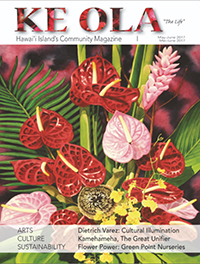
“Many people have roots here and have heard stories, but have never been to Kahua,” Godfrey says. “There are plenty of people we don’t know, and this is a chance for us to meet. We also want to honor those in Papa Monty’s generation who are up there in age and have worked at Kahua Ranch. There are only about ten of them left.”
Founded in 1928 by Atherton Richards and Ronald Von Holt, Kahua Ranch eventually became its own little village on the slope of the Kohala Mountains. Atherton Richards, Monty’s uncle, didn’t have any children of his own, and bequested the ranch to Monty. Godfrey says Kahua had its own rubbish dump, small grocery store, church, and farm. Every week a cow would be slaughtered to provide meat for the ranch families. Cows were milked three times a week to provide milk for the workers. Poi makers from Kohala would go to the ranch and sell poi to the employees. Many of the original Hawaiian families hired by Richards and Von Holt still have descendants working on the land and the Kainoa family is one of them.
In addition to the ranch in Kohala, there were other locations and enterprises Kahua managed over the years: in Kahuku on the south end of Hawai‘i Island, a slaughterhouse in ‘Ewa on O‘ahu’s south shore, and a ranch in Waialua on the north shore of O‘ahu. It takes a lot of work to find the descendants of former rancher families now long-gone, and committee planners have received a good response. They started searching with a list of 100 names of original employees and families who have worked for the ranch since its beginnings, people who were hired as cowboys, farmers, tour operators, and more. Amoo said they also put the invitation out on social media and approximately 600 people are expected to attend the reunion.
Without checking the calendar, Godfrey and the others met to plan dates for the gathering, and chose the weekend of June 9 through 11. They later realized their big weekend coincided with the Kamehameha Day Parade in North Kohala. Amoo says the Kamehameha Day committee decided to honor the paniolo during the parade and invited them to participate, creating the theme of this year’s parade: Kūkulu Kahua o Kohala Paniolo, rebuilding the foundation for Paniolo Ranching of Kohala.
“The committee talked to churches and decided to start the parade at 11am on Sunday so people can go to church,” Amoo says. “At the reunion, Kimo Ho‘opai Jr. will hold ‘Cowboy Church’ on the deck at Kahua because we won’t fit into the little church on the ranch. The Kamehameha Parade will honor Papa Monty and nine other honorees.”
The main purpose of this reunion is to give people a chance to return to their roots and to preserve memories, Kimo Ho‘opai Jr. says. Many of the families who left the ranch had no ties and never returned. For others, grandparents and their stories were the only ties, and Kimo Jr. hopes this reunion will teach descendants what roles their predecessors played and how Kahua Ranch life shaped entire families.
Kimo Jr., part of the planning committee, was born and raised on Kahua Ranch. His grandparents migrated from Kealakekua to Kahua in the early 30s and worked as ranchers “old school style”—no trucks, no trailers, no electricity. Kimo Jr.’s parents also worked the land at Kahua and his father, like Godfrey’s, hoped neither of his sons would have to live the life he did.

“The ranch life is blood, sweat and tears for a small amount of money,” Kimo Jr. says. “But Kahua Ranch provided meat, milk, rice, and more for the families. There were extras provided besides pay.” He explains that life was a lot tougher in previous generations; employees worked from morning to night and there was a lot of hardship. Kimo Jr. hopes that kids and grandkids get some of the knowledge and stories passed down when everyone gets together.
As a paniolo, Kimo Jr. was hired by Kahua Ranch during the summers after he returned from the service. He worked at Parker Ranch for about eight years, then moved to Kehena Ranch for 18 years. For five years now, Kimo has worked at Palani Ranch in Kona. He treasures when folks come together to talk about the old times and to sing. His own father, Kimo Ho‘opai Sr. will be present to share his experiences of Kahua, along with Monty Richards, Alan Wall and other long-time cowboys.
Even though people may have been away for years, Kahua Ranch will always be considered home by families who have worked there. Kimo Jr. talks about how music and kanikapila (to play Hawaiian music together) was and is an important part of ranch life. He says award-winning Hawaiian musician Kuana Torres Kahele has family ties to Kahua. Home and music are synonymous with paniolo and it is Kimo Jr.’s vision that a lot of music is sung and shared throughout the weekend.

Kimo Jr.’s own two sons attended trade schools and worked for a while in their fields before becoming cowboys themselves.
“They tried, but then said, ‘You Dad, you taught us to live off the land, and what better way to raise our families, with salt meat, smoke pork, hard work and good values.’ It’s about being out there every day. We all cherish what we do,” Kimo Jr. explains.
Both Kimo and Godfrey remember working at Parker Ranch in the early days. Hawaiian was the language of the land, and the Japanese and Portuguese cowboys knew the language too. Godfrey recalls that both his parents spoke Hawaiian fluently, but he could only understand the language and not speak it.
“Numbers, colors of cattle, bent horns or straight horns, directions like left or right were all called out in Hawaiian,” says Godfrey. “You had to know what they were saying or you were in trouble. They made a man out of me at 18 years old, they chewed me up!”
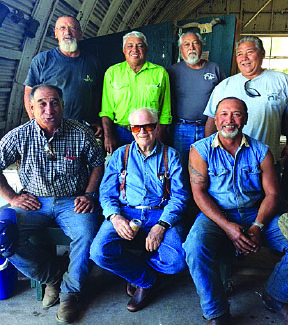
Kimo Jr. shares stories of his father’s early morning rides on horseback beginning at 2am, driving cattle from Kahua to Kawaihae and back. Godfrey knows Hawaiian place names for hills, pastures, bays and areas that have been long forgotten. He reminisces about camping and fishing on the beach owned by Kahua Ranch which Monty opened for use by ranch families. The preservation of stories and memories of the ranching life is one of the most important components of this reunion.
Because it is anticipated to be a large gathering, the group planned a March trail ride fundraiser so the burden doesn’t fall on Monty or the ranch. For the reunion itself, Amoo says there will be tours of the ranch, trolley and trail rides, activities for the kids, riding in the Kamehameha Parade and of course, a lū‘au and ho‘olaule‘a (celebration). The committee will hire a videography team to capture stories and record history for the families.
With a catch in his voice Kimo Jr. says, “We cherish what we do. Like any profession, each has its expertise, everyone has their own. We believe in Hawaiian cowboys and the Hawaiian language. We are still upholding a culture that people don’t know about.” ❖
